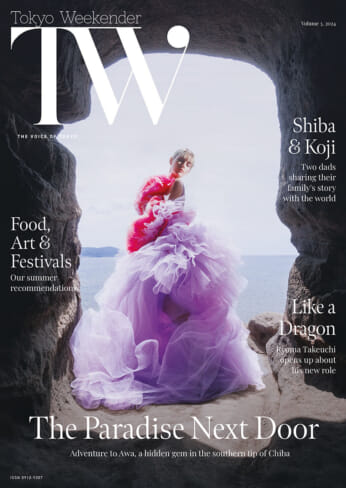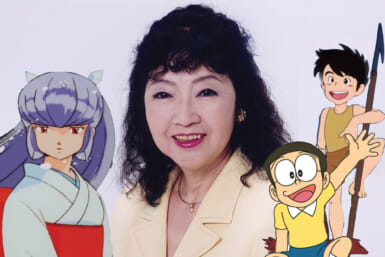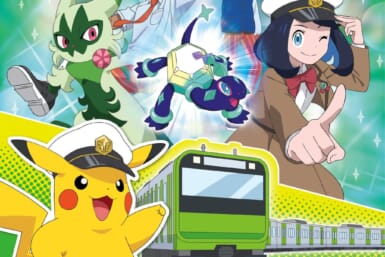by Teresa Cowan
Man’s ability to adapt to his environment sets him apart from the rest of the animal kingdom. However, I’ve had suspicions as to the truth of this.
Since our arrival in Japan, there were times when I was concerned our two cats were adjusting better than us humans. Nevertheless, with a little bit of outside help, we’ve been able to acclimatize ourselves to those little problems, quirks and contradictions so prevalent in Japan.
Below is a description of the principal resources on which I’ve relied. Although they are by no means the only resources, they are those which I’ve used in times of stress and confusion. In addition, I’m pleased to report on a superb new book for parents entitled Japan For Kids: the Ultimate Guide for Parents and Their Children by Diane Wiltshire Kanagawa and Jeanne Huey Erickson.
Tokyo Metropolitan Government Foreign Residents’ Advisory Center. In operation since 1978, this center provides guidance in solving problems in the following areas: daily living concerns such as medical treatment, education and waste disposal, legal problems and problems resulting from traffic accidents such as insurance and compensation.
This service is available in English (Monday-Friday) at 5320-7740, Chinese (Tuesday-Friday) at 5320-7766, French (Thursday) at 5320-7755 and Korean (Wednesday) at 5320-7700. Their hours of operation are 9:30 a.m. to noon and 1-4 p.m.
The Tokyo Metropolitan Government also publishes a useful guide to every day life entitled Living in Tokyo, 1990. For copies write to Publication Section, Public Relations Division, Office of Information, Tokyo Metropolitan Government, 3-5-1 Marunouchi, Chiyoda-ku, Tokyo 100. In addition, many of the ward offices offer foreign residents information centers and publish guidelines for living in their respective wards.
Welcome Furoshiki. I was introduced to this wonderful organization by mere chance. Late one night during a horrendously slow ride on the #86 bus with two exceptionally cranky kids, a fellow traveler kindly distracted my waiting brood! Later she gave me her meishi and, written across the top in bold type were the words, “Welcome Furoshiki.”
As my traveling companion explained, the organization was conceived by Charlotte Kennedy-Takahashi about 10 years ago to assist newcomers to Tokyo and Yokohama. This is how it works: Businesses sponsor the organization and contribute either some useful literature, a product, a map, etc., which is wrapped, together with other useful tidbits, in a traditional Japanese blue-and-white square piece of material called a furoshiki. Then a trained volunteer, with at least two years of residency in Tokyo or Yokohama, heads off to meet the newcomer.
If you’re interested in a visit, simply call 3760-8560. The office will then put you in contact with a representative to arrange a mutually suitable time and place for meeting.
Tokyo English Life Line. TELL, established in 1973 as a non-profit, church-affiliated organization, is an invaluable resource which offers assistance to the foreign community in a variety of ways. Through its telephone counseling service (5481-4455, from 9 a.m. to 4 p.m. and 7 to 11 p.m.), they help foreigners sort out problems (marital, housing, legal, etc.), without imposing a philosophy, and the caller may remain anonymous.
Secondly, TELL acts as a clearing house or referral service for medical or governmental organizations and others. You name it. No problem is too small for them to tackle. I once called just to locate a suitable bus route to my children’s school.
TELL also offers Tokyo Tapes, a self-help service which provides suggestions for coping with every day problems. The number to call is 5481-4333 between 9 a.m. and 4 p.m. or 7 to 11 p.m., available every day, including holidays.
Now, what we’ve all been waiting for, last, but not least, is the new book, Japan For Kids: the Ultimate Guide for Parents and Their Children, by Diane Wiltshire Kanagawa and Jeanne Huey Erickson, published by Kodansha International. The authors have lived in Japan for a combined total of 14 years and together they write a column, “Kidscene,” for the Asahi Evening News.
These two ladies realized, having small children themselves, that parents were desperate for information. It was then that their four-year odyssey of research, writing and field testing began. Originally their plan was to focus on a young audience (5 and under) with Tokyo as the playground.
However their editor persuaded them to expand their horizon and include older children, and to provide information to be utilized anywhere in Japan. Then, as Diane pointed out to me, “Our families virtually lived the book. Each investigation was an opportunity for our kids to field-test the information.”
In my estimation, this book has everything you’ll ever need to entertain, care for, school and clothe your child. Do you need to know about diaper service? It’s there. Are you curious about common Japanese playground vocabulary, medical terms or what to say in a taxi? It’s right there in a handy little book which will fit into your diaper bag, purse or knapsack.
Included in this veritable encyclopedia are in-depth guidelines and tips for traveling, including the necessary telephone numbers. There’s a gold mine of goodies on mail order catalogues, TV programs, magazines and more.
These astute ladies have even taken the trouble to rate parks and other amusement facilities according to accessibility, cost, availability of food and toilets and other details. For the price of a mere ¥1,900 this book will undoubtedly become the indispensable guide for parents in Japan. Don’t leave home without it!








